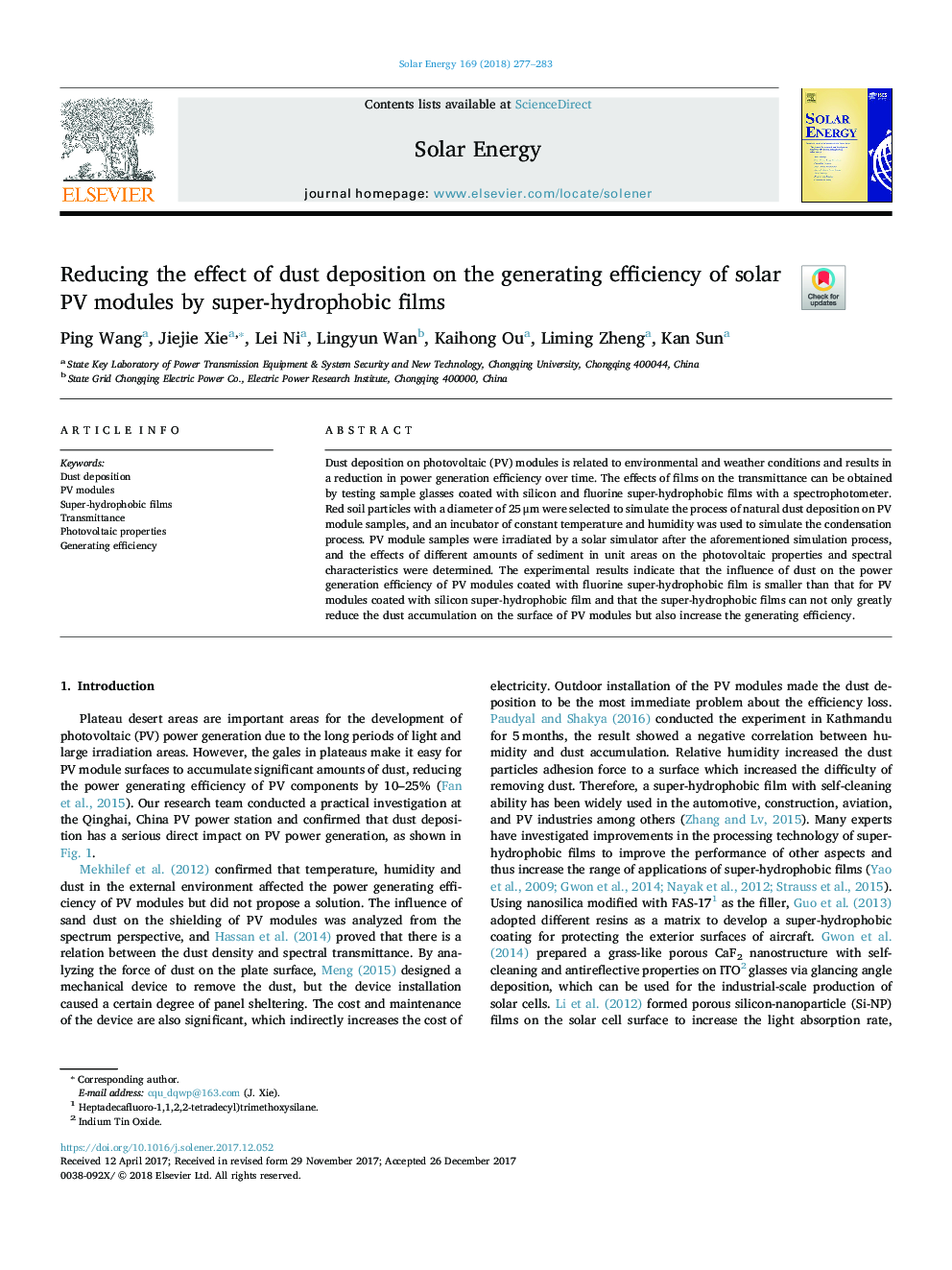| Article ID | Journal | Published Year | Pages | File Type |
|---|---|---|---|---|
| 7935188 | Solar Energy | 2018 | 7 Pages |
Abstract
Dust deposition on photovoltaic (PV) modules is related to environmental and weather conditions and results in a reduction in power generation efficiency over time. The effects of films on the transmittance can be obtained by testing sample glasses coated with silicon and fluorine super-hydrophobic films with a spectrophotometer. Red soil particles with a diameter of 25â¯Î¼m were selected to simulate the process of natural dust deposition on PV module samples, and an incubator of constant temperature and humidity was used to simulate the condensation process. PV module samples were irradiated by a solar simulator after the aforementioned simulation process, and the effects of different amounts of sediment in unit areas on the photovoltaic properties and spectral characteristics were determined. The experimental results indicate that the influence of dust on the power generation efficiency of PV modules coated with fluorine super-hydrophobic film is smaller than that for PV modules coated with silicon super-hydrophobic film and that the super-hydrophobic films can not only greatly reduce the dust accumulation on the surface of PV modules but also increase the generating efficiency.
Related Topics
Physical Sciences and Engineering
Energy
Renewable Energy, Sustainability and the Environment
Authors
Ping Wang, Jiejie Xie, Lei Ni, Lingyun Wan, Kaihong Ou, Liming Zheng, Kan Sun,
